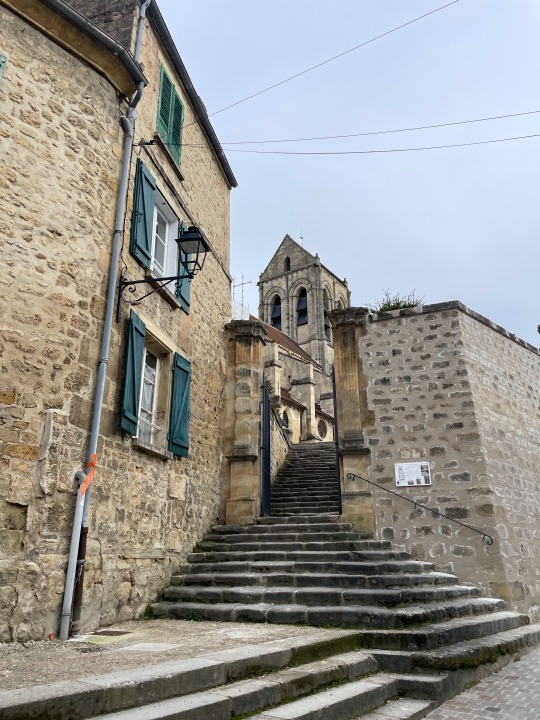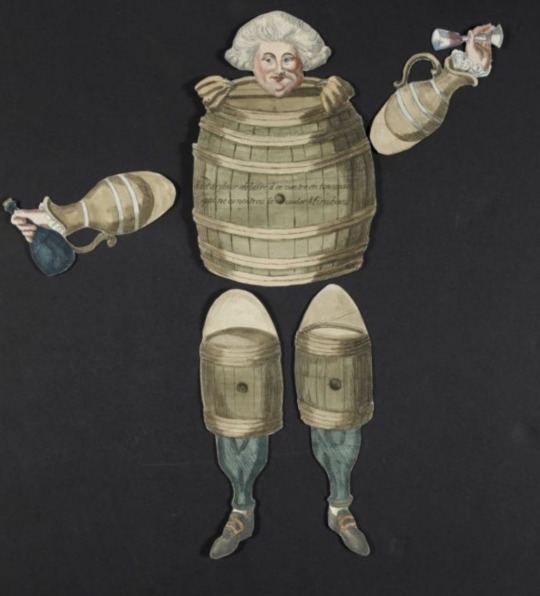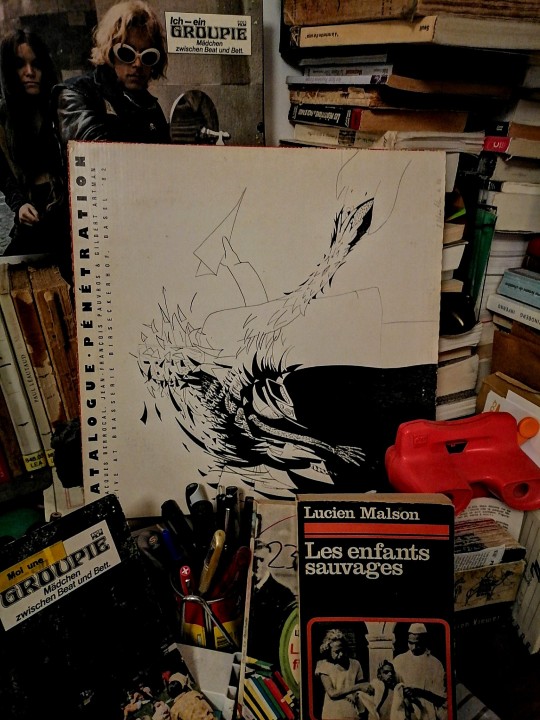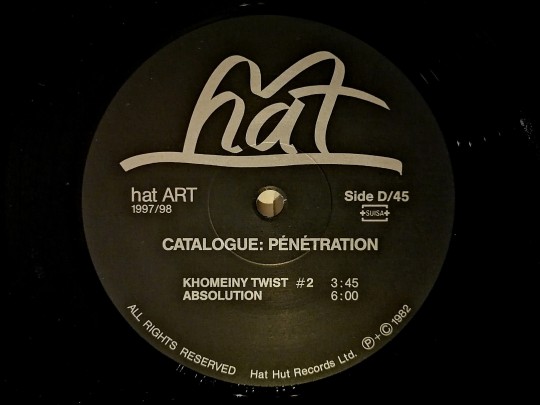#french catalogue
Text


Catalogue Galleries Lafayette - early 1970s
#french catalogue#galleries lafayette#1970s#70s#70s style#70s bedroom#70s aesthetic#carpet rugs#interior design
129 notes
·
View notes
Text


My Baudelaire presentation + essay are finally submitted! I’m basically done with this evening diploma in French and honestly… it’s a relief. Consistency really pays off, even when the end doesn’t seem in sight ⭐️
#I still don’t know how I found the time to attend courses from 3 different universities 👁️👁️ While working 💀#And you know what? Mid breakdown last year I vowed to never commit to evening courses again because they’re just sooo fatigant#And STILL when I submitted my work I went through the catalogue of other languages this uni offers 🥴 2 year German course next semester? 👀#studyblr#light academia#studyspo#dark academia#Cottagecore#langblr#cozycore#French langblr
1K notes
·
View notes
Text

American Apparel: French catalogue (2003)
322 notes
·
View notes
Text
Paleolithic Media Catalogue
Hello everyone :)
Short story first:
When I began brainstorming for my prehistoric story, I started wondering what other prehistoric fiction there is out there. I was not familiar with it and have not seen much. That's when I started my grand literature review and began a search for what fiction exist out there. I wanted to know what kinds of stories are being made with this time period. What are the common themes or recurring ideas (I found lots of humans and dinosaurs works. And time travel). Since I've had a growing collection on my computer, I decided I should keep on enlarging it and put it online. It's nowhere near complete. I'll slowly keep accumulating the collection as I find more. I only have fiction books and comics right now. I still need to work on the film section.
You can access the blog here!
***
As for where I am in my reading, the one's I've finished reading are Earth's Children series (book 1-4. Dropped it afterwards lol. I made a post on with fanart) Dance of the Tiger and it's sequel Singletusk (They were good! I'll upload my review on the blog), and Sisters of the Wolf (It was ok!). I got my hands on The Inheritors and excited to start reading it. I REALLY want to read the Shiva trilogy, but I found no PDF online... and it's out of print :( There is certainly old copies on ebay. And I want to read Chronicles of Ancient Darkness. There seem to be lots of good books out there.
#For whomever might find it useful... I'm doing this#I actually found another huge catalogue by an awesome person called Stephen Trussel#However their site has not been updated since 2016#I've linked their site on my blog when referencing the ENG translation for 'paris before man'#I'll make a paragraph dedicated to that site too#This has gone beyond my initial literature review lol#But for someone writing in this genre.. I've got to get to know it well#Because If I do end up publishing it I KNOW for sure it will be set up against other prehistoric fiction#mainly earth's children series#LITERALLY every book I checked had people in the reviews comparing it to Auel's series. Like it's the blueprint of prehistoric fiction#Like it's 'The Lord of the Rings' of its' genre.#and since it's a graphic novel maybe it will be compared to other comics?? Which I haven't found a lot YET#Emmanuel Roudier's work looks SO GOOD#I say looks because it's in French and I can't read French#I'm tempted to try translating it with what little French I learnt from public school and actually learn French in the process#Mezolith is great but it's not a full story. Just small snippets/short stories#Same with Tiger Lung. It's great. Also very very short. I recommend both.#I have not read the mangas yet. I read the first few chapters of Grashros and it's 100% Shounen stuff so far lol
35 notes
·
View notes
Text

Dear Santa,
I want this for Christmas, and by this, I mean the whole thing. Yes, I’ve been that good.
Kindly,
TimeTravelingCourtney
#american girl#pleasant company#kirsten larson#og#I mean I even want the French braid#Christmas#nice list#catalogue#post your Santa letters!
63 notes
·
View notes
Text
So, there's this scene in Cousin Bette, which has a pretty striking line:
– On a marché, dit le vieillard en se retirant, et les morts vont vite à Paris !
(Honoré de Balzac, La cousine Bette, 1846)
“The world moves on,” said the old man, as he withdrew, “and the dead move quickly in Paris!”
(tr. James Waring) (given the implications, I would translate the first half of Vautrin's reply as “We have made our move”)
and I was like, critique of capitalism, etc etc. My friend @madmerchant said she was pretty sure she'd read something very similar in Dracula. Was Stoker referencing Vautrin? Was it a coincidence? There's a persistent shroud of the Fantastic surrounding Vautrin, it would not be surprising if someone would have thought of him as a vampire, or an immortal creature of some kind... however:
“You are early to-night, my friend.” The man stammered in reply:—“The English Herr was in a hurry,” to which the stranger replied:—“That is why, I suppose, you wished him to go on to Bukovina. You cannot deceive me, my friend; I know too much, and my horses are swift.” As he spoke he smiled, and the lamplight fell on a hard-looking mouth, with very red lips and sharp-looking teeth, as white as ivory. One of my companions whispered to another the line from Burger’s “Lenore”:—
“Denn die Todten reiten schnell”—
(“For the dead travel fast.”)
oooh. this lead to discovering that Lenore, is one of the cornerstones of Romanticism. So it wasn't that Stoker was referencing Vautrin's last incarnation, but rather, the same originary poem Balzac hismelf was referencing. The influence of the poem was huge, and epsecially the french went crazy over it. The first translation was published in the Journal des Débats in 1811, translated from English. The newspaper published it, not without adding the poem put in display "the most odious vices of the German School".
It was not until Mme de Saël (she of the North vs South temperaments fame) wrote an article trully valuing the work as the poetic masterpiece it was, that the fever for Lenore started to root on the young minds of a Certain Group of Artists-and their readers- in 1820. Madame de Saël had thrown the gauntlet:
"No french translation, be it prose or verse, could express all the nuances and detaild of the German original."
and one Gérard de Nerval picked it up, offering FIVE translations of his own throuout the years...
The poem collects a German folk story, and as soon as you read the summery you *know* why the more edgy Romantics were crazy about it. Like other German folk tales (as Der Erlkönig) it features a frenzied ride through the forests, and a lover that is not what he seems to be (he is DEATH. The RIde is A TRAP) Embroildled in the poem are some anti nobility aspects:
"(in Lenore, we hear) The powrful and pained voice of a Titan, tormented until death by the aristocracy. (...) In German language, 'Bürger' (the poet's name) is synonimous to citoyen"
(Heinrich Heine)
and a desire to revindicate the autochthonous, popular poetry from the lower classes -the Lenore poem is recolected from a popular song Bürger heard a young peasant singing- as the true voice of a nation:
It will remain eternally true that if we have no Volk, we shall have no public, no nationality, no literature of our own which shall live and work in us. Unless our literature is founded on our Volk, we shall write eternally for closet sages and disgusting critics out of whose mouths and stomachs we shall get back what we have given.
(Johann Gottfried Herder)
So, what I'm saying is, I must read Lenore, and also, it is very likely that that Vautrin line is a direct reference to that icon of the dawn of French Romanticism, something the then elders (cousin bette was published in 1846) would have remembered and understood...
#french romantics#LENOREE!!#an incredibly influential poem ppl seem to overlook#thanks thoma for your brains/the talk XD#vautrin related#balzac related#nerval and stael#the origins of international romanticism#my source for the mme de stael quote and the nerval translations is an article on Lenore in Spain#by José Escobar#u can download it in the english wikipedia entry for lenore#lenore mania#French Romanticism Memes/catalogue of references they shuffled about#ofc nerval was a fan it’s his special interest-> german literature
22 notes
·
View notes
Text


As a key exponent of abstract art and the Informel in particular Jean Fautrier (1898-1964) had a major impact on French but also on German postwar art. His Otages, semi-abstract paintings resembling the faces and bodies of French Nazi victims, are deeply touching pieces of modern art that once again show that abstraction is capable of conveying deep emotions. The present catalogue, edited by Curtis L. Carter and Karen K. Butler and published by Yale University Press in 2003, accompanied a major traveling retrospective of Fautrier’s work in the US and of course discusses the Otages but also highlights other aspects of the artist’s life and work: how was his work received in the US? Who were his important critics? And what’s his position within the artistic avantgarde? These questions are addressed just as well as his other bodies of work, e.g. the Natures mortes and Originaux multiples, receive additional attention. Despite its slender dimensions the catalogue contains a huge amount of valuable information, insights and documents that paint a profound picture of Fautrier’s life and work. It should also be noted that the book is one of only a few contemporary English-language publications on the artist. A great catalogue!
#jean fautrier#informel#abstract art#art book#art history#french art#exhibition catalogue#art informel#modern art
18 notes
·
View notes
Text
All fairytale fans heard about or know about the ATU, the Aarne-Thompson-Uther classification, this international classification of folktales and fairytales in numbered types.
But do you know that there are other fairytale classifications? Local fairytale classifications? And since I am French let me present you...
The Delarue-Tenèze classification. Also known as "Le Conte populaire français" (The French Folktales), of its complete title "Catalogue raisonné des versions de France et des pays de langue française d'outremer" (Reasoned catalogue of the versions of France and French-speaking oversea countries).
This book/classification, created by Paul Delarue and Marie-Louise Tenèze, and published in five volumes between 1957 and 2000, is a study of folkloric fairytales inspired by the ATU, which it heavily borrows from and frequently references. However, the Delarue-Tenèze classification is an exclusively French system. That is to say all the folktales and fairytales studied there are originating from France, or present in countries that inherited some of French culture. The complete list of countries is: "France, Canada, Louisiana, French islands of the USA, French West Indies, Haïti, Maurice island, La Réunion". By studying, comparing and classifying the French-speaking (or French-written) fairytales of these various areas, Delarue and Tenèze managed to create a complete study of the history and evolution of essentially French fairytales, excluding all the types of stories that are typically not found on French-speaking lands.
It was thanks to the work of Delarue and Tenèze that we notably can reconstruct what the fairytales of Perrault, for example, ORIGINALLY looked like before the author took them back and rerote them. I evoked this during my Little Red Riding Hood posts (I think it was in the one titled "The dark roots"). Delarue and Tenèze, by accumulating all the French variants of the fairytale they could find, separating those that clearly were post-Perrault (they had elements newly introduced by the author) to those prior to Perrault (or at least not "contaminated" by their written cousin), and looking at the geographical repartition of these tales, they could identify which elements exactly Perrault cut out of his tale (the wolf serving meat and wine to the girl, the removing of clothes in the fire, the cat cursing under the table...) and thus re-create what the fairytale would have originally looked like.
In this extent, this work is deeply needed for whoever wants to study fairytales in France or the French folklore. Unfortunately, after two "complete editions" gathering all the volumes in 1997 and 2002, the publishing house of the catalogue fell on hard times, and closed in 2011. Since this date, the catalogue is out of print, and you can only access it by having second-hand copies or borrowing it at libraries.
However - and I just learned of this today upon looking at my references - the work of Delarue and Tenèze (both unfortunately deceased) is still continued today, or rather was taken back by a group of anthropological studies of Toulouse, who are preparing three more volumes to add to the original catalogue.
If you are interested in what each volume contains:
Volume 1 and 2 cover the "contes merveilleux" (marvelous tales/magical tales - aka the fairytales as we understand them today).
Volume 3 is about the "Animal tales", mixing animal-featuring fairytales, Reynard the Fox-type of stories, and other moral and fables inherited by popular culture from La Fontaine, Aesop and more.
Volume 4 is about the "Religious tales", aka all the French folktales, fairytales and local legends that show France's folk-Christianity, mixing the heavily Christian (Catholic-flavored) culture of France, "first daughter of the Church", with the countryside legends and tales of witches, wizards, fairies, giants and other ogres, turned into demons, saints, angels and Virgin Maries.
Volume 5 is the "conte-nouvelle" (the "short story-tales"), basically folktales that are realistic sounding and just sound like non-magical, non-religious life stories or local legends.
#fairytales#fairy tales#french fairytales#delarue-tenèze classification#fairytale classification#fairytale catalogue#atu
13 notes
·
View notes
Text
I saw these articulated “Mirabeau Tonneau” dolls in an auction catalogue that @silver-whistle posted about.



And ran into the original caricature in Révolutions de France et de Brabant No. 27! I also found a version in A History of Champagne by Henry Vizetelly (1882) that attributes the original sketch to Camille. He might have just meant it came from his paper, but I like to imagine, because this is probably how it worked (?), Camille going to see the artist for whatever issue he was working on and saying, “oh!, and L’Ami du Peuple rises from the sewers!” or “here’s what I’m thinking, it’s Mirabeau, but made entirely out of barrels”.


#the catalogue is definitely worth looking at#camille desmoulins#mirabeau#frev#french revolution#Révolutions de France et de Brabant
22 notes
·
View notes
Text







CATALOGUE
"Pénétration"
(LP+12". Hat Hut. 1982) [FR]
youtube
#catalogue#1982#france#french freaks#no wave#open jazz#punk jazz#post punk#jac berrocal#jean francois pauvros#gilbert artman#records#live#free rock#Youtube
2 notes
·
View notes
Note
I'm interested in doing some medieval-style illustrations since I like yours so much; do you have some good sources of references that you could share? If they're sorted in some way by century and region that would be rad, but ok if just generally medieval Europe.
my fave for pose referencing is the codex manesse because it’s got a TON of illustrations and they’re a real treasure trove for the style of medieval guy i like to draw, or i’ll find pose references from random manuscript images i see around the internet or while i’m doing my professional medievalism and poking around in digitized manuscripts for paleography group etc. for borders and marginalia i like to just look through books of hours that are digitized at various libraries like the british library or the BnF. most of the time i end up referencing european manuscripts from the 14th or early 15th century because those are the ones i enjoy the styles of the most when it comes to figures or marginalia. the codex manesse is really the only one that i return to over and over, in general my advice is to just hit up the big libraries and university libraries in the region you’re interested in and peruse their digitized manuscripts
#like i enjoy english and french border work from the 15th century so for that i usually just go to like the bnf or bl catalogue#and search for books of hours in that time frame#but a lot of it is just like. osmosis from colleagues online who work at libraries or post manuscript stuff#can’t recommend the codex manesse enough for poses though
5 notes
·
View notes
Text

105 notes
·
View notes
Quote
Of language and writing, considered as magical operations, sympathetic magic.
Of moods in Woman.
The charming moods, those in which beauty consists, are:
The blasé,
The bored,
The empty-headed,
The impudent,
The cold,
The introspective,
The imperious,
The capricious,
The naughty,
The ailing,
The feline — a blend of childishness, nonchalance and malice.
Charles Baudelaire, Intimate Journals
3 notes
·
View notes
Text
I dont post a lot about my current degree but. let me just say. the google translate app that lets you use your phone camera is really saving my ass with provenance research
#all these art catalogues in german and french and italian i weep#literally what were museum studies grads who were not quadro-lingual even doing before google translate#natchat5#about me#uni life#everyday i regret lapsing in french and not working for fluency
3 notes
·
View notes
Text
i just wrote the word line "lign".
yesterday i was convinced the word catalog was spelled 'catalogue'
hm.
#is it the exhaustion?#is it the french?#tbh how is it NOT catalogue#that looks SO much more correct#'catalog' bleh thanks i hate it#mah life#no1curr
0 notes
Text
i was trying to make sure I could back up a claim about a certain edition being popular to cite from, received a heart attack when [author] said that the first edition was actually in latin and the french came later. looked around at everyone else's work including my own photos of 1554 editions (IN FRENCH) as well as the library catalogue. this statement is in fact not true and 2008 is wAY too late to be claiming that.
#sorry m but i have the date of 1554 on two separate title pages im gonna go w the herd on this one#sophies ramblings#catalogue says 'first published under [french title]'#i trust some other names a bit more
1 note
·
View note